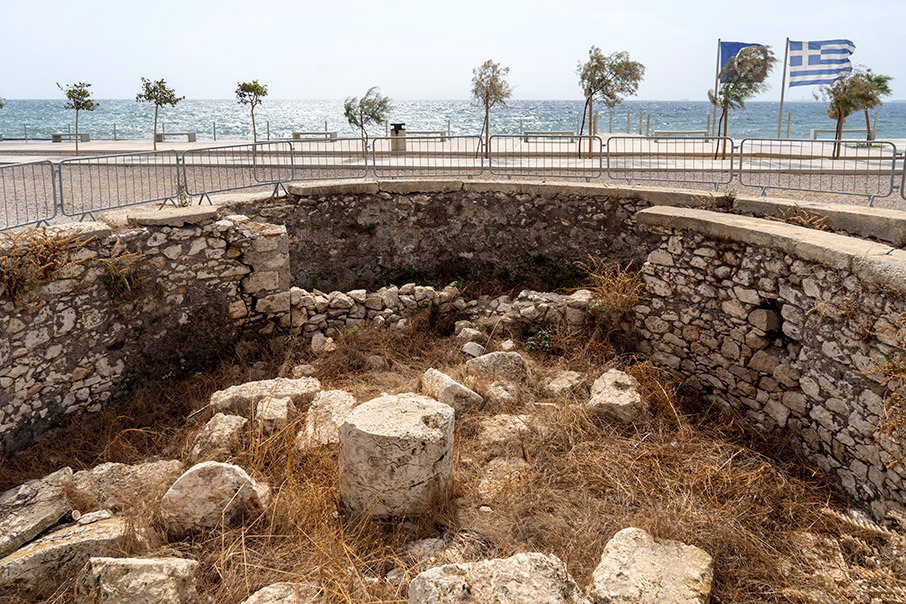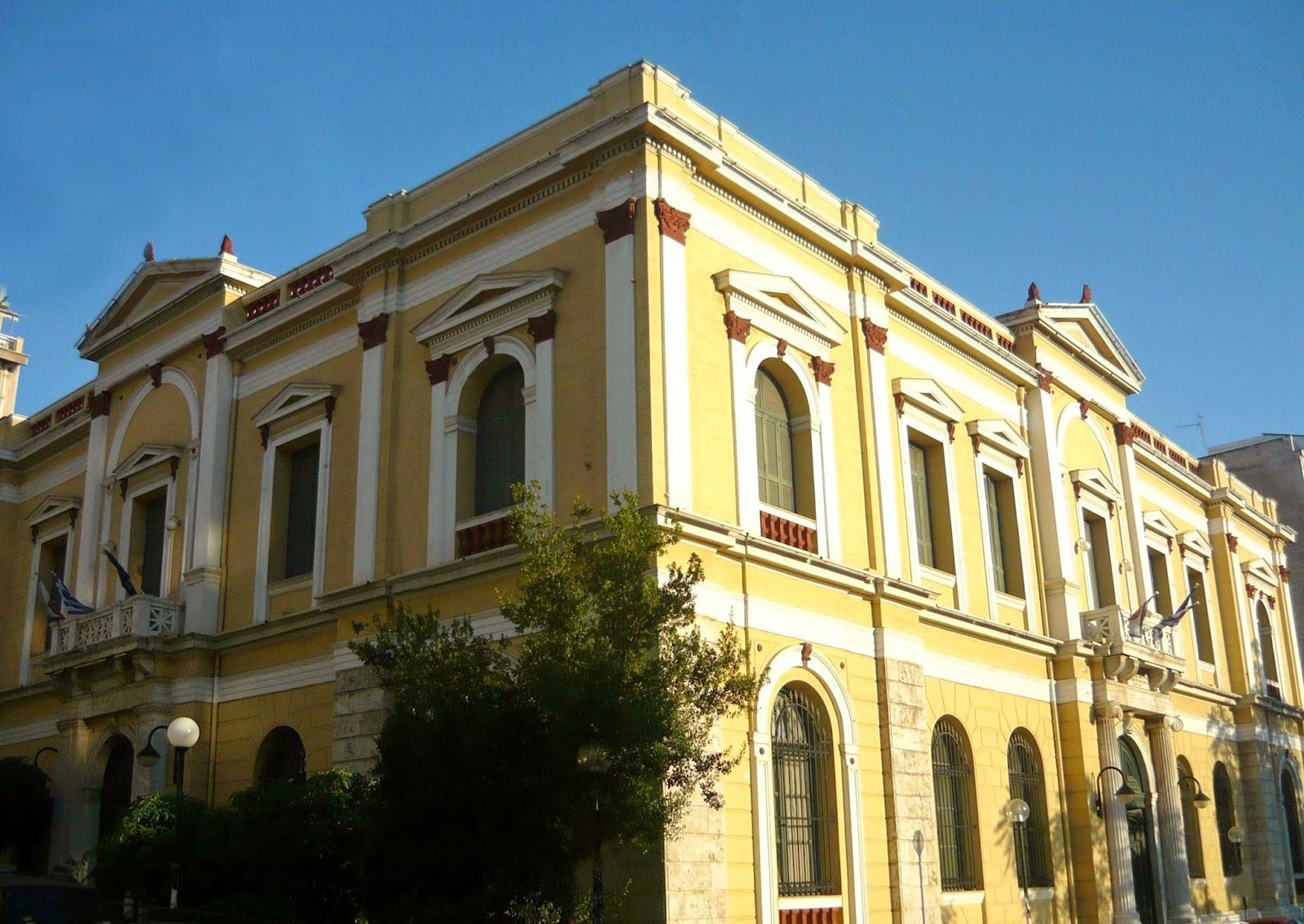Hellenic Maritime Museum
Informations
Address:
Akti Themistokleous 30, Pireas 185 37, Greece
Hellenic Maritime Museum
In 1949, a group of respected citizens of Piraeus together with officers of the Military and Merchant Navy, having as a common bond the love for the sea and ships, gathered in the office of the Minister of Marines at the time, Gerasimos Vassiliadis, and signed the foundation act of the union with the name “”Association of the Naval Museum and collection of relics of the Nation’s sea battles””. This is how the Hellenic Maritime Museum was established.
Since 1993, it has organized a series of educational programs aimed at groups of students of all educational levels and at the experiential teaching of our maritime history and tradition as well as the students’ creative and direct contact with the museum collections. Moreover, the Museum participates in maritime-themed exhibitions touring in areas and islands. The Museum participates in conferences and seminars, in international exhibitions and programs of a community character whose purpose is to highlight the common cultural heritage of the peoples of the Mediterranean. This actions conist a dynamic factor in the cultural life of Greece, having as main purpose to raise public awareness of the issues of protecting the marine environment and to promote the maritime tradition abroad.It has also developed a rich publishing work, mainly of books on topics related to Greek naval history and the publication of the quarterly magazine “”Sea trip of Naval History and Tradition”” with the aim of promoting scientific research and raising awareness among the readership in the preservation and continuation of the maritime tradition.
Eight exhibitions are included in the museum’s permanent exhibition. Two halls are dedicated to the naval achievements of the ancient era. The presentation is made mainly through models of ships. Also, there is a room where the sea march of Hellenism during the Byzantine period is presented, a hall dedicated to the Navy of the Greek Revolution and two rooms where the visitor can learn about the Navy from the time of the foundation of the Modern Greek state to the present day. There is also a room representing Merchant Shipping from 1827 to the present day and an exhibition on Traditional Shipbuilding and sailing vessels of the 19th & 20th centuries.
In the museum area one can meet the Art Collection, most of which came from donations. The Art Collection’s purpose is to demonstrate the multidimensional relationship of the Greek creator with the marine element. It reveals the different forms of the sea that moved the artists and the diverse ways of visual representation of these forms. The collection includes paintings by important Greek painters as well as engravings by Greek and European artists dating back to the 16th century. Additionally, a small number of sculptures included in the collection. In a specially designed space, the visitor can admire a part of the Onassis collection. The collection of the well-known businessman, includes models of ships, miniature works, nautical instruments, weapons, furniture, paintings and engravings dating from the 17th century. These heirlooms adorned his famous luxury yacht, “”Christina””. The most important and impressive part of the Onassis collection are the bone models of ships, works of French prisoners of the Napoleonic Wars.
The “”Athinoula Martinou”” library, an integral part of the museum, is the special naval library, which was started with donations from personal collections and mainly deals with naval history books, covering the development of the merchant and naval navy through the centuries, with an emphasis on Greek space. Among the most important sections of the museum is its Archive. The Historical Archive, the purpose of which is the rescue, recording and documentation of historical events that have as their axis the maritime history and tradition of the nation. The archival material comes mainly from donations of descendants of historical families and members of the Museum. It has more than 25,000 pages and spans time from the time of the Greek Palegenesis until the end of the 20th century.
In addition, the Photographic Archive, with the purpose of gathering, recording, studying and exploiting photographic material that is directly or indirectly connected to our maritime history and tradition. The photographic material comes mainly from donations of descendants of naval families and currently exceeds 12,000 original photographs (monochrome and colored), some of which are included in photo albums. At the same time, the archive has more than 2,000 postal cards (colored and monochrome) while maintaining a satisfactory number of negatives on glass plates (200). The material chronologically covers the most important historical events of the Country from the end of the 19th century to the present day.
The Map Archive, with approximately 700 old historical maps by well-known cartographers, covering the time period from the 16th to the 20th century. It also includes printed maps created by renowned cartographers and publishers such as G. Mercator, A. Ortelius, VM Coronelli, A. Mallet, O. Dapper, A. Lasor, JP de Tournefort. Since the foundation of the Museum, there have been donations of maps from private collectors and agencies, such as two large bound collections of the Hydrographic Service established in 1919. The collection was significantly enriched in 1991 and 1992 when a large number of maps were purchased from major art galleries at home and abroad and was completed in 1998 with the important donation of 220 maps and engravings by the family of the late Admiral Dimitrios Papalexopoulos. The maps are classified according to the geographical areas they depict. Finally, the Plan Archive and the Audio-Visual Archive are available to visitors who wish to gain a fuller understanding of naval tradition, history and development








